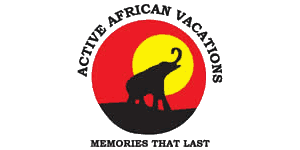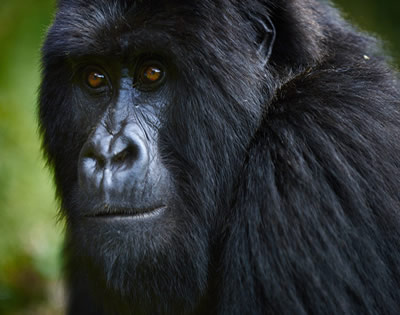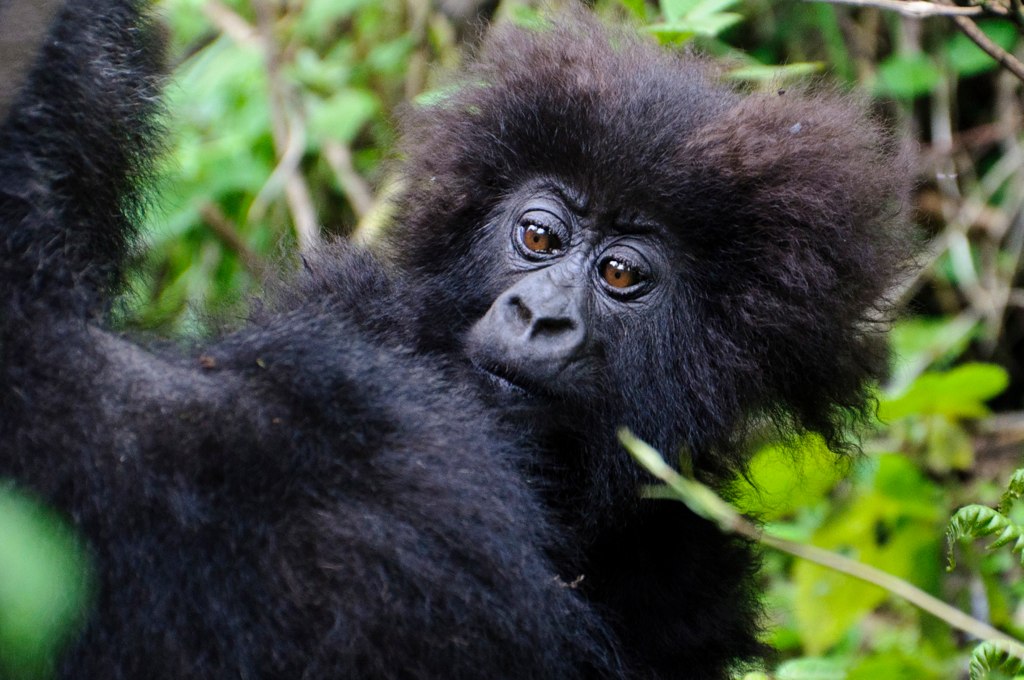
Volcanoes National Park Rwanda: best Gorilla trekking experience
Volcanoes National Park, also known as Parc National des Volcans in French and Pariki y’lgihugu y’lbirunga in Kinyarwanda, is a small hamlet in the northwest province of Rwanda, in the town of Musanze (formerly Ruhengeri). This park, said to be the oldest national park on the African continent, is home to Rwanda’s critically endangered mountain gorillas. It is always possible to locate the gorillas in Rwanda for tourists who wish to go gorilla tracking. The boundaries of Volcanoes National Park are shared by Virunga National Park in the Democratic Republic of the Congo and Mgahinga Gorilla National Park in southwest Uganda.
This national park is home not only to a substantial number of mountain gorillas but also to Golden Monkeys, an endangered monkey species that may offer the widest variety of tourism activities now offered within the park. Volcanoes National Park, spanning over 160 km2 and home to rain forest and bamboo, protects five of the eight volcanoes that make up the Virunga Mountains: Mount Kirisimbi, Mountain Bisoke, Mountain Muhabura, Mountain Gahinga, and Mountain Sabyinyo. An American naturalist named Dian Fossey lived in the park for a while. a woman whose commitment to gorilla conservation is demonstrable by the fact that her creations are still in use today.
The main attraction is the endangered mountain gorilla (Gorilla beringei beringei), along with a plethora of other wildlife that inhabit the plains of the park. These creatures include buffaloes, hyenas, bushbucks, black-fronted duikers, and golden monkeys. Some reports also claim that, on rare occasions, a few elephants can be spotted at the park. There are 178 different kinds of birds in the world; about 12 of these are main species, and the remaining 15 are subspecies that are restricted to the vast Ruwenzori highlands and the Virunga protected area. Gorilla trekking is the most well-liked of the tourism activities provided by the Rwanda Development Board.
About Volcanoes National Park.
Volcanoes National Park, the beginning point of any Rwandan gorilla safari, is home to the majority of the mountain gorilla population in the Virunga Conservation area. Because to its convenient location little over two hours’ drive from Kigali’s international airport, the VNP is the most accessible gorilla national park in the world. A thorough Rwanda safari schedule includes seeing a variety of birds, reptiles, amphibians, insects, and other species in Volcanoes National Park in addition to gorillas.
Covering an area of 160 square kilometers in northern Rwanda, Volcanoes National Park is a part of the broader Virunga Volcano Conservation Region, which also includes the Virunga National Park in the Democratic Republic of the Congo and the Maghinga Gorilla National Park in Uganda.
Because poaching was compromising the mountain gorillas’ existence, they were first protected in a small region around the volcanoes of Karisimbi, Mikeno, and Visoke. Throughout the year, a large number of people attend the park, home to around ten habituated gorilla families. Among these households are the following:
Titus Family.
The Silverback Titus, born during Dian Fossey’s research at Karisoke, where she was studying a gorilla group, inspired the name of the first gorilla family, the Titus group. Titus the gorilla lost his father, uncle, and brother to poachers; his mother and sister left him to be reared by a separate male gorilla. Titus survived the baby’s respiratory problems and what Dian Fossey called the infant’s apparent “underdevelopment and wiry” appearance
Susa group. (A)
The Susa River, which flows through the region where the gorilla group typically resides, is the source of the family’s name, or provided the inspiration behind it. In terms of mountain gorilla conservation research, the Susa gorilla family is regarded as one of the most prominent and historically significant families.
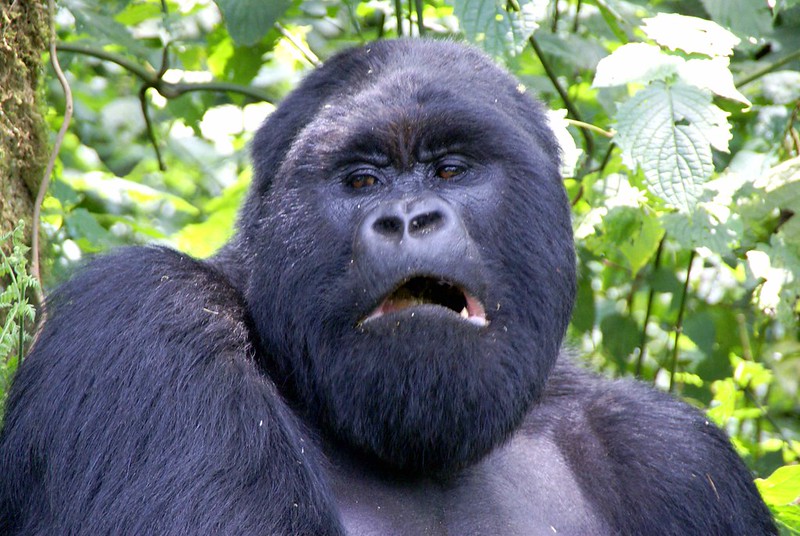
Before her untimely death in 1985, Dian Fossey examined this specific gorilla family at the Karisoke Research Center in Rwanda’s Volcanoes National Park.
Due to its typical high altitude distribution, this is the hardest group in Volcanoes National Park to trek. Sometimes it reaches such high altitudes that tourists are prohibited from hiking it. It is best to save your gorilla tracking permits for this group if you are in need of a little physical challenge.
The rangers make the procedure easier by taking the initiative to find the gorillas and connecting with the other rangers to provide them with precise directions so that the journey can be shortened, even if finding this family may not be easy.
The Susa gorilla group was the largest in Volcanoes National Park, with up to 42 members. However, due to conflicts within the group and gorilla family dynamics, Susa presently contains 28 members, including three Silverbacks and the twins Impano and Byishimo.
Being able to have twins makes them one of the fortunate families. Therefore, travelers who are daring, enjoy strenuous, long hikes, and, most importantly, would love to see the twin gorillas, should consider joining the Susa Group.
Karisimbi group ( Susa B)
The group that split out from the original Susa in 2008 is sometimes referred to as Susa B. Its sixteen members include two silver backs. The group is the hardest to find since it inhabits the upper slopes of Mt. Karisimbi, which is located at an elevation of 4507 meters. Since the group has established itself high in the upper slopes, it is ideal for trackers who are interested in strenuous hiking. Tracking this group can be difficult at times as they move higher up into the mountains, even if RDB rangers will initially locate them a day earlier.
Amahoro group.
The Kinyarwanda word meaning tranquillity is where the family’s name, Amahoro, originates. Due to the family’s well-known serenity and kindness, several of its members have left the silverback Ubumwe group and joined Umubano. As implied by the name Amahoro, which means “peace,” the group is thought to be the most peaceful. To find it, you have to hike up the slopes of Mount Bisoke, where the group established their residence. There are two silverbacks among the group’s eighteen members.
Umubano group.
This family broke away from Ubumwe because of the continuous disputes between the two chief silverbacks, Charles and Ubumwe. Charles was never satisfied with Ubumwe’s power. In the end, Charles was successful in forming the Umubano group by separating from the other members. The name of the group, which translates to “living together,” refers to the 13 members, including 2 silverbacks.
Sabyinyo group.
Nestled on the mild inclines between Mountains Sabyinyo and Gahinga is the nearest and easiest family of gorillas to find. The group is well-known for its massive silverback, Guhonda, which has managed to keep Ryango, its main opponent, outside the family and remain a lone silverback. The gang consists of thirteen members, one of whom is a banished silverback. Guhonda, the leader of the herd, is the biggest silverback in the park, weighing about 220 kg. The Sabinyo volcano inspired the band’s name, which means “old man’s teeth.”
Agashya group.
The original family member, who was 13 at the time of habituation, inspired the name of this group. The family was named after Agashya, which means the “News,” who eventually overthrew the group’s original leader, Silverback Nyakarima, and took over as leader. There are now 27 family members in total, including one silverback (Agashya). The group shares the same territory as the Sabyinyo group, but occasionally, when it senses danger, Agashya leads the family further into the mountain.
Kwitonda group.
This immigrant tribe from the Democratic Republic of the Congo got its name from its dominant silver back, Kwitonda, which means “the Humble One.” Like the Karisimbi group, this group is hard to follow since it periodically climbs to the upper slopes of Mount Muhabura, a result of its migration history. The gang consists of 23 members, including 4 silverbacks.
Hirwa group.
This family was formed in 2006 by a few members of the 1groupsup and some members of the Sabyinyo group. Agashya. After more gorillas joined, the group today consisted of 16 gorillas, including one silverback. The group’s name is derived from the regrettable circumstances surrounding its formation. Alliterate “the lucky one,” Hirwa became a mother to twins in 2011 by accident. The Hirwa community resides on the foothills of Mount Sabyinyo on the side of Mount Gahinga.
Ugenda group.
The word “Ugenda,” which means “on the go,” in Kinyarwanda was given to the group because of their peculiar propensity for roaming around. It wanders the Karisimbi region with 11 members, including 2 silverbacks, and is hard to trace because it doesn’t have a designated habitat.
Bwenge group.
This group was started in 2007 by Bwenge, the group’s dominant silverback, who recruited female members from other groups after departing from his Natal group. It bears his name. Six of the tribe’s infants died, putting them through hard times. Between the Karisimbi and Bisoke mountains, on the slopes of the Karisoke volcano, are their dwellings. But the group has bounced back, and now there are eleven in all, one of which is a silverback. This tribe is referred to by the Kinyarwanda word Bwenge, which means “Wisdom,” therefore it is not strange that they were featured in the movie “Gorillas in the Mist”.
Other wildlife species in Volcanoes national park.
In addition to mountain gorillas (Gorilla beringei beringei), other potential inhabitants of Volcanoes National Park include buffaloes (Syncerus caffer), golden monkeys (Cercopithecus mitis kandti), black-fronted duikers (Cephalophus niger), elephants, and bushbucks (Tragelaphus scriptus). 178 different bird species can be found in the park, including at least 29 species that are only found in the Virunga and Rwenzori mountains.
Golden monkey tracking.
Volcanoes National Park provides golden monkey trekking at 7:00 a.m. at the same spot as gorilla trekking. Volcanoes National Park currently offers tourists the opportunity to witness both habituated golden monkey groups, with an estimated population of 80 individuals each. These rare species have also been classified as endangered.
The golden monkeys of Rwanda have become accustomed to the regular visits from researchers and visitors, overcoming their early resistance because they have been habituated. They are located near the volcanoes’ bases in the bamboo jungle. When you find the golden monkeys, you can spend an hour with them in a small group of no more than eight individuals. Trekking with gorillas is akin to this experience. The animals of the threatened species are highly animated and enjoy hopping from tree to tree, which makes them difficult to photograph.

The golden monkey climb is a singular and breathtaking experience that you shouldn’t miss while visiting Volcanoes National Park if animals fascinate you. Apart from Volcanoes National Park, there is another colony of golden monkeys in Mgahinga Gorilla National Park, which is located in the Kisoro district of southwestern Uganda.
How much is a golden monkey permit?
Similar to those who like to visit mountain gorillas, tourists who wish to see golden monkeys must obtain a permit in order to get up close and personal with these amazing primates for an hour. Thankfully, permits for golden monkeys are extremely inexpensive, costing only $100 each in Rwanda and Uganda. Licenses are bought from the Rwanda Development Board and the Uganda Wildlife Authority, respectively. Travelers should reserve their permits at least three months in advance of the planned adventure to ensure adequate planning and to get permissions. The cost of a golden monkey permit includes government taxes, park admission fees, and ranger costs.
How long does it take to reach golden monkeys?
The ideal amount of time to spend in the bush is not mentioned. It may take half an hour to many hours, depending on how quickly the monkeys travel. Nevertheless, golden monkeys spare tourists hours of climbing because they do not ascend as high as gorillas.
Best time to visit Volcanoes national park.
Rwanda can be visited all the year round in order to go for tracking. However, it is said that the dry months of December to early March and June to September are the best times to visit Rwanda. While the months of March through mid-May and July through September are recognized as Rwanda’s rainy season, December to March is a long dry season, with temperatures occasionally reaching 29 degrees Celsius.
The dry season is preferable in Rwanda even though the country has wonderful weather throughout the year. Additionally, animal watching is more frequent at this time of year because of the normally pleasant weather. This is also the greatest season for gorilla tours for travelers interested in seeing gorillas because there is less likelihood of rain during the journey and good hiking conditions in the rainforest. Even now, in the drier months, we still advise you to wear waterproof gear because the equatorial environment is so unpredictable. Because it is also peak season around this time, costs for services like vehicle rental and lodging may increase.
However, some tourists, especially those on a tighter budget, prefer to vacation during the rainy season. Hotels provide discounted dining and lodging at this time due to low occupancy, which is a benefit for visitors. Additionally, there is little demand for gorilla permits, which assures tourists a chance to see these threatened creatures unimpeded.
Dian Fossey Tomb.
Dr. Fossey was an innovative primatologist who quickly rose to prominence for her conservation efforts. She campaigned to create the first specialized ranger patrols while confronting both political and financial challenges. She set out to raise awareness of the condition of the great apes in addition to conducting research and active conservation.
There is no doubt that Dr. Fossey was instrumental in preventing the extinction of mountain gorillas, even though her aggressive approach to conservation and tenacious determination to protect the gorillas she lived with may have been contentious and even earned her a few enemies in Rwanda and other countries.
After one of her favorite gorillas, Digit, was ruthlessly killed by poachers the same year, Dian Fossey founded the Digit Fund in 1978. The Digit Fund contributed to the cost of essential ranger patrols that protect gorillas from poachers and are conducted within their habitat. She also contributed to global awareness of gorilla conservation through her memoirs and the 1987 Hollywood film (“Gorillas in the Mist”) based on her life.
Dr. Fossey tragically passed away amid the beautiful forests she had lived in for 20 years in 1985. But she leaves a lasting legacy. A new generation of African conservationists was motivated by her work, giving the gorillas new hope. The Gorilla Organization, which still working relentlessly to make sure her efforts were not in vain, was founded as a result of the original Digit Fund, which laid the groundwork for it.
How difficult is the Dian Fossey hike?
The Dian Fossey hike is quite tiresome to hike. This is because you need to take over 2 to 3 hours for this hike to be complete. Therefore, it requires someone to be physically fit and energetic. Additionally, when hiking to this grave, one needs strong waterproof gumboots to help in the hike because the terrain sometimes is slippery and muddy due to rain.
Hiking mountain Karisimbi.
Hiking is one of the adventurous activities one should not miss while in the volcanoes national park. This is because this hike will greatly give you a great experience to hike and reach its elevation of 4507m above sea level.
What to wear for gorilla trekking?
This is an amazing and distinctive activity that requires distinctive requirements while tracking. Here is a list of the necessary equipment for hiking with gorillas and a packing list.
- Waterproof gumboots.
- Insect repellent.
- Long-sleeved shirts.
- Long-sleeved trousers.
- Cameras.
- Hiking stick.
- Hat.
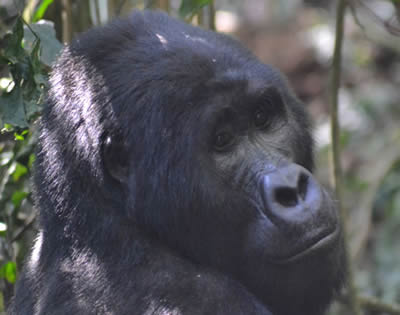 5 Days Rwanda Gorilla Trekking Safari
5 Days Rwanda Gorilla Trekking Safari
5 Days Rwanda Gorilla Trekking Safari gives you exceptional Budget Gorilla Trekking in Rwanda.
3 Days Rwanda Gorilla Trekking Safari
3 Days Rwanda Gorilla Trekking Safari takes you Gorilla Trkeking at Budget at Volcanoes National Park.
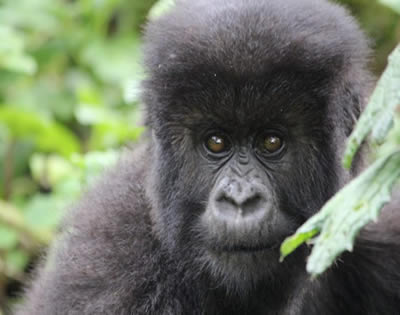
4 Days Gorilla Trekking Tour Rwanda
4 Days Gorilla Trekking Tour Rwanda goes to Volcanoes National Park where you trek the Mountain Gorillas.
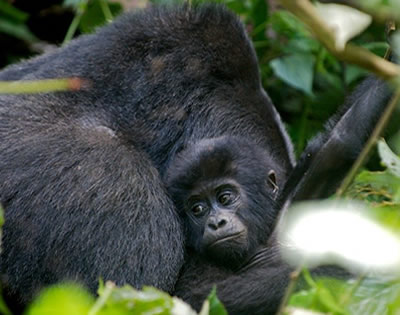
7 Days Rwanda Gorillas & Chimps Safari
7 Days Rwanda Gorillas & Chimps Safari gives you Gorilla Trekiing and Chimpanzee tracking.
